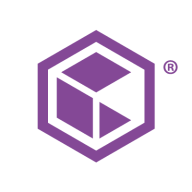

Commvault Cloud and NetApp SaaS Backup are competing in the data protection and backup solutions market. Based on data comparisons, NetApp has an upper hand due to its extensive feature set and high reliability.
Features: Commvault Cloud is renowned for its integration capabilities, comprehensive management tools, and advanced data protection features. NetApp SaaS Backup distinguishes itself with seamless integration, extensive restoration options, and superior automation.
Room for Improvement: Commvault Cloud could enhance its automation features, streamline its interface for ease of use, and improve its initial setup process. NetApp SaaS Backup can work on reducing its pricing tier complexities, enhancing its support for legacy systems, and expanding third-party integrations.
Ease of Deployment and Customer Service: Commvault Cloud offers straightforward deployment and responsive customer service, contributing to a positive user experience. NetApp SaaS Backup provides an intuitive deployment process, backed by detailed onboarding guides and proactive support, often resulting in quicker resolution times.
Pricing and ROI: Commvault Cloud offers competitive pricing with scalable options, delivering favorable ROI for its extensive features. Despite the higher cost, NetApp SaaS Backup justifies its price through rich features and high long-term ROI, often seen as a worthwhile investment for feature-rich solutions.
| Product | Market Share (%) |
|---|---|
| Commvault Cloud | 8.6% |
| NetApp SaaS Backup | 0.3% |
| Other | 91.1% |

| Company Size | Count |
|---|---|
| Small Business | 57 |
| Midsize Enterprise | 24 |
| Large Enterprise | 81 |
Commvault Cloud is the ultimate cyber resilience platform built to meet the demands of the hybrid
enterprise. Beyond its core functionality of data backup and recovery across diverse workloads, including applications, databases, virtual machines, and files, Commvault Cloud stands out as a robust defense against ransomware. Going beyond backup, the platform integrates advanced data security features such as encryption, access control, and threat detection, safeguarding against unauthorized access and cyber threats.
With tools for data management, classification, and migration, businesses can optimize storage costs, enhance accessibility, and comply with regulations seamlessly. Boasting cloud integration with major providers like AWS, Azure, and Google Cloud, Commvault Cloud leverages the scalability and flexibility of the cloud for comprehensive data protection and management. The platform's automation capabilities streamline tasks, and its reporting and analytics features provide valuable insights into data usage, potential risks, and optimization strategies. Commvault Cloud is not just a security tool; it is a key component of cyber resilience, enabling organizations to not only protect against cyberattacks but also recover swiftly and minimize the impact of incidents. Elevate your cyber resilience strategy with Commvault Cloud.
As a Cloud Service Provider or a Managed Service Provider (MSP), deliver Data Protection as a Service (DPaaS) to your end customers for most popular SaaS Applications like Microsoft Office 365 and Salesforce. With Partner Central, reduce your Total Cost of Ownership (TCO) footprint and enhance your ROI. Hosted and delivered as software as a Service (SaaS), Partner Central enables you to manage and deliver Data Protection SLAs in a multi-tenant service architecture from a single user interface.
We monitor all SaaS Backup reviews to prevent fraudulent reviews and keep review quality high. We do not post reviews by company employees or direct competitors. We validate each review for authenticity via cross-reference with LinkedIn, and personal follow-up with the reviewer when necessary.